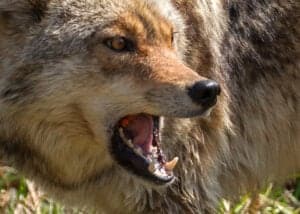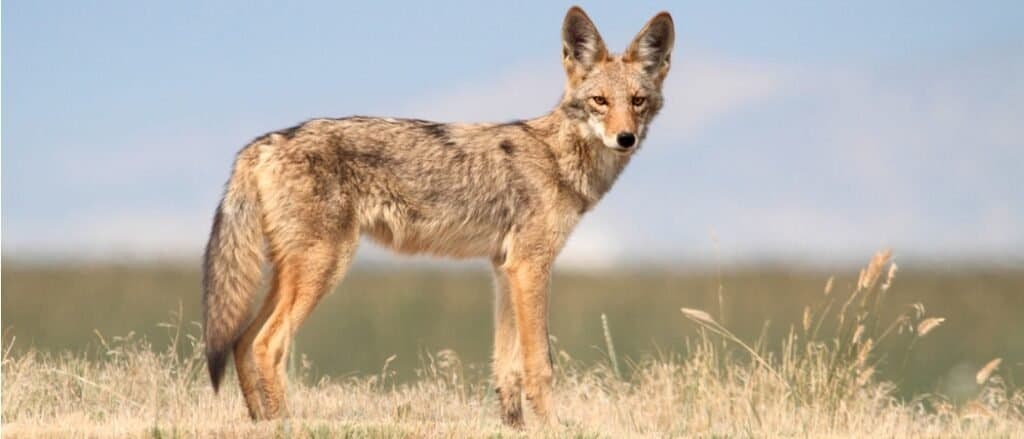
Wild canines can often be told apart by their tails.
©iStock.com/SteveByland
The coyote is a North American wild canine that has a striking resemblance to the wolf. Due to interbreeding, many modern-day coyotes contain considerable amounts of wolf and domestic dog DNA. As a result, many coyotes exhibit a variety of color patterns. However, there are certain characteristics that can assist you in distinguishing between a coyote, a wolf, and its more familiar cousin, the fox. One distinguishing feature is the tail.
What Do Coyote Tails Look Like?
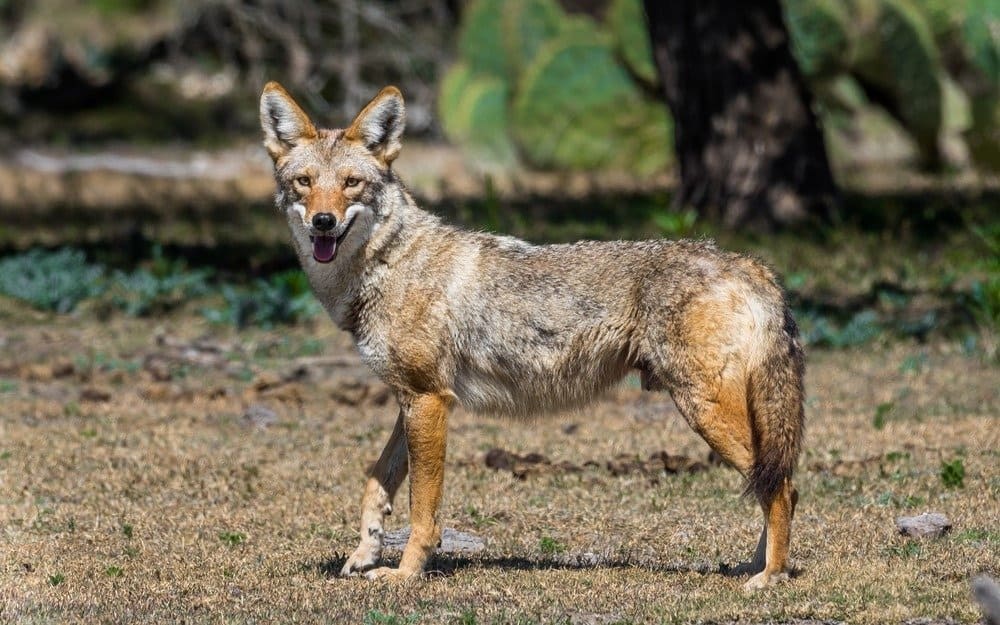
©Sam Carrera/Shutterstock.com
The average coyote has a head-to-body length of 39 to 63 inches and a tail length of approximately sixteen inches.
Coyotes can weigh up to fifty pounds and have a resemblance to German shepherds or collie dogs. A coyote’s coloration can range from silver-gray to black, with reddish undertones around the ears and face. However, the tail tip is always black on the coyote.
Coyote Tails vs Red Fox Tails
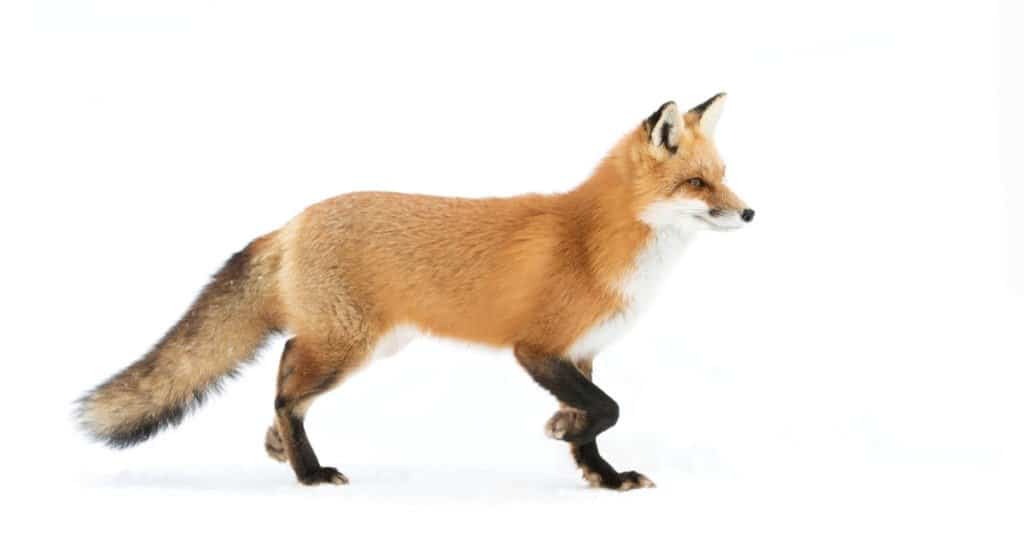
©Jim Cumming/Shutterstock.com
The red fox has a head-to-body length of 18 to 35 inches and a tail length of 12 to 22 inches.
Weighing in at around 10 to 12 pounds, the red fox is the most widely dispersed dog in the world. Long, white-tipped tails and bright orange-red hair are common features of red foxes. However, since red foxes’ markings are so varied, it is often easier to identify them by their build. In appearance, red foxes resemble small greyhounds; nevertheless, their thick coats give the impression that they are much bigger.
The white-tipped tails of red foxes dangle on the ground, making them a common sight. The fox’s tail is longer and bushier than the coyote’s, despite its diminutive stature in comparison.
Coyote Tails vs Gray Fox Tails
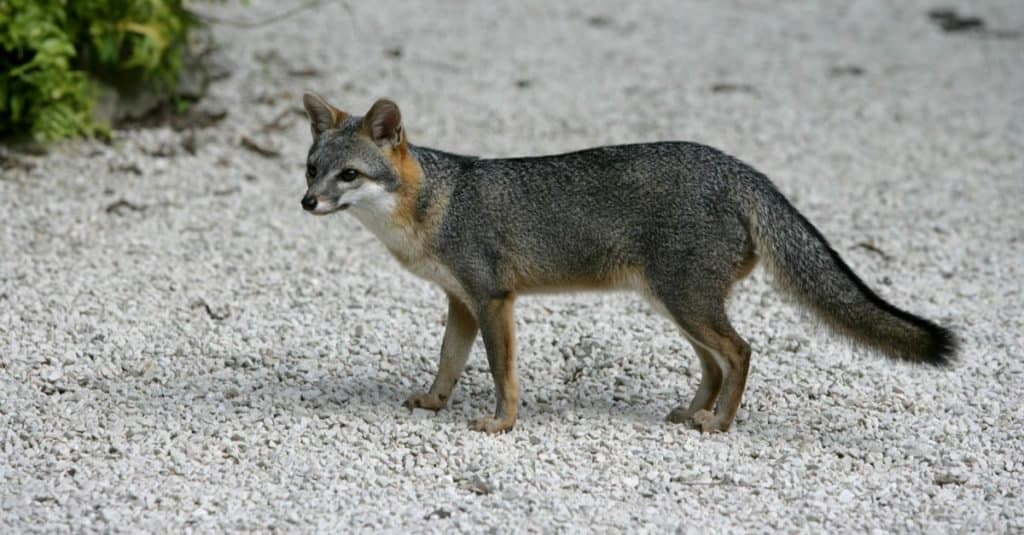
©Erni/Shutterstock.com
The gray fox has a head-to-body length of 21 to 29 inches and a tail length of 11 to 16 inches.
Grey foxes are the longest-lived canine species and only weigh a mere 8 to 10 pounds! With its ability to scale trees, the grey fox is best known for its cat-like appearance. People rarely see them because of their camouflage and tree-climbing prowess.
Grey foxes, like red foxes, have lengthy tails that account for almost half the length of their entire bodies! However, on the back, tail, and face of a grey fox, the fur is usually grey, and the tip of the tail is always black.
Although this is like the coyote tail, you should easily tell these two canines apart by their body size. In general, grey foxes are shorter and more muscular, and much smaller than coyotes.
Coyote Tails vs Wolf Tails
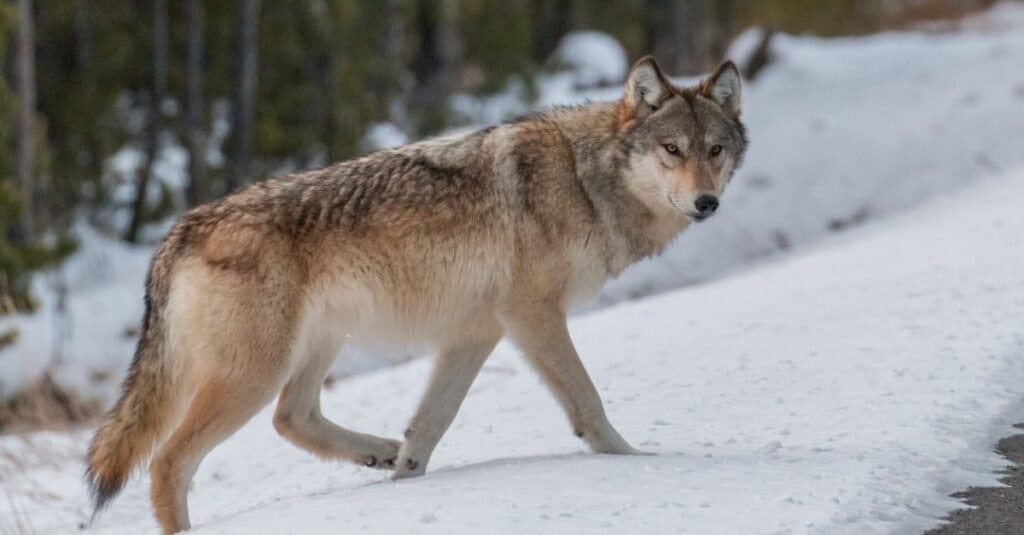
©iStock.com/mtnmichelle
The wolf has a head-to-body length of 39 to 63 inches and a tail length of 13 to 22 inches.
Wolves are the largest wild canids, weighing between 80 and 100 pounds! They can be light gray to black in hue and stand 2.5 feet tall at the shoulder. They are larger than coyotes and foxes, with wider snouts, shorter, rounder ears, and longer tails.
Since the tails of grey/grizzled animals are typically black-tipped, the length of the tail is an excellent differentiator. For example, foxtails are bushy and lengthy, half the length of the animal’s body and coyote tails are skinnier, more dog-like, and shorter in proportion to the length of the animal’s body. Wolves have bushy/well-furred, bottle-brushed tails that are straight. Wolves’ tails are shorter than those of other dogs, ending just below or above their hocks.
What Do Coyotes Use Their Tails For?
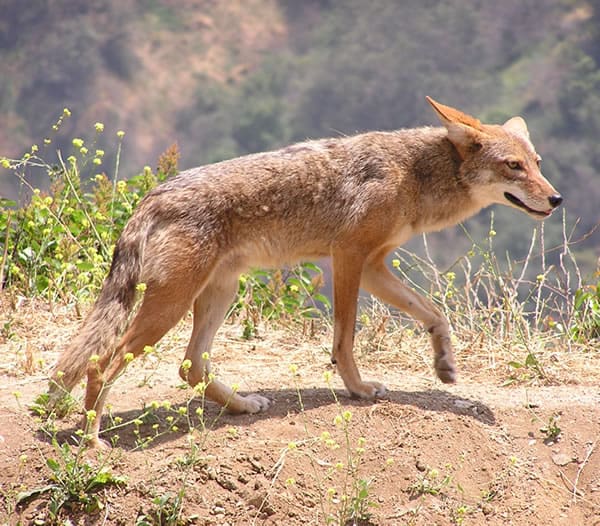
coyotes use their tails much like domestic dogs. They will wag it, tuck it, and stand it up in response to their emotions.
©Justin Johnsen / CC BY 2.0 – License
Coyotes will wag, dip, or stand up their tails in reaction to their attitude, just like domestic dogs do. To show aggression, a Coyote’s tail becomes bushy and is held horizontally in the air. In the base of the coyote’s tail, there is a scent gland that releases an aroma. The supracaudal gland, sometimes known as the violet gland. This gland produces a musky oil, which has a distinct violet scent.
When you see coyotes rubbing their upper tails against trees or rocks to leave messages for other creatures, you’ve seen them using violet gland oils to communicate and to mark their scent. Violet glands aren’t just found in coyotes. These are found in every dog, as well as in several unrelated animals. Violet glands in foxes and wolves produce potent scents for marking as well.
The photo featured at the top of this post is © Jim Cumming/Shutterstock.com
Thank you for reading! Have some feedback for us? Contact the AZ Animals editorial team.



